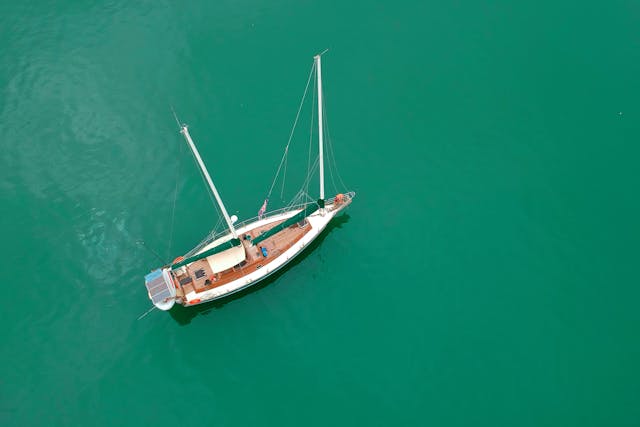
What are the doldrums? They are an area of windless ocean where sailing ships used to get stuck.
The doldrums are not a problem for modern shipping because they don’t rely on wind power. They are a problem for yachts and other types of sailing boats. A Salvadoran fisherman called Jose Salvador Alvarenga spent 14 months adrift on his fishing boat in the Pacific Ocean after the motor was damaged by a storm. For a lot of that time, his boat was stuck in the doldrums and didn’t move.
The doldrums are also used for emotions as well. If someone is listless or despondent, they are said to be in the doldrums. This is the origin of the word and it was then applied to the oceans because it was a similar condition. It was first used to apply to the ocean in 1824, but it was used to refer to any area of almost no wind. In 1848, it started to be used for the specific areas in the oceans. It is also used in other situations as well, such as a sluggish economic period being called the economic doldrums.
The doldrums are an area that spans 5˚ of the equator to 5˚ south of the equator. The area is officially called the Inter Tropical Convergence Zone. It can be seen from space as a band of cloud that circles the planet over the oceans. These clouds are generally thunderstorms.
In this ten-degree band, there is almost no wind. It is the place where the northern and southern trade winds meet. The trade winds are two winds that blow around the planet at about thirty-degrees north and south of the equator. They are caused because the Earth’s rotation forces the air towards the equator, creating low pressure and strong winds that blow from east to west in both the northern and southern hemispheres. They are called the trade winds because ships could use them to quickly sail across the ocean and trade. However, at the equator, these two winds collide. When the two winds collide, they are both pushed up into the air.
At the same time, the sun shines directly on the equator, heating the ocean and the surface air up. The air becomes very hot and rises into the air because hot air always rises. This circular motion of the trade winds hitting each other and going up, combined with the heated air going up, means there is almost no wind on the surface. The air cannot move in or out of this area. That is what creates the doldrums. There are sometimes breaks in the system and there can sometimes be wind, but it can be weeks at a time. Sailing ships have been stuck in the doldrums for so long that all their crew have died of starvation.
From space, the doldrums are seen as a band of thunderclouds. Thunderclouds form because of the warm air that is heated by the sun. The sun heats the sea and the air. Water evaporates off the surface of the sea and gets carried upwards by the heated air. This warm, moist air keeps going up but as it rises, the air loses energy and it starts to cool. When it has lost so much energy that it can’t hold the water anymore, the water falls as rain. There are a lot of storms in this area because warmer air can carry more water into the air and the air over the equator is some of the hottest on Earth. Also, the meeting trade winds create a barrier that stops the clouds going sideways and they go upwards. These massive clouds stretch up until the reach the colder air in the upper atmosphere. At this height, the water in the clouds freezes and the small pieces of ice fly around inside the clouds. They strike each other and the clouds slowly build up huge charges of electricity that they release as lightning.
The doldrums are not the only place where there is no wind and sailing ships would have trouble. There are two areas called the horse latitudes that are thirty degrees north and south of the equator. There is almost no wind along these bands as well, although it has a different cause. There is a ridge of high pressure along these bands and winds go south and north from this point. The trade winds flow from the horse latitudes to the equator and the polar winds flow from the horse latitudes towards the poles. There is often almost no wind along the horse latitudes and because of the direction of the winds, there is almost no rain as well. Most of the world’s deserts are found in the horse latitudes. And this is what I learned today.
Photo by Pok Rie: https://www.pexels.com/photo/white-sailing-boat-on-body-of-water-1124036/
Sources
https://oceanservice.noaa.gov/facts/doldrums.html
https://www.etymonline.com/word/doldrums
https://en.wikipedia.org/wiki/Jos%C3%A9_Salvador_Alvarenga
https://www.merriam-webster.com/dictionary/doldrums
https://archive.theoceanrace.com/en/news/10308_Seven-things-you-need-to-know-about-the-Doldrums.html
https://en.wikipedia.org/wiki/Intertropical_Convergence_Zone
https://oceanservice.noaa.gov/facts/tradewinds.html
https://www.actionnews5.com/2022/09/20/breakdown-why-winds-are-so-calm-equator
https://www.nationalgeographic.com/environment/article/summer-storms-heat-humidity-climate-change
